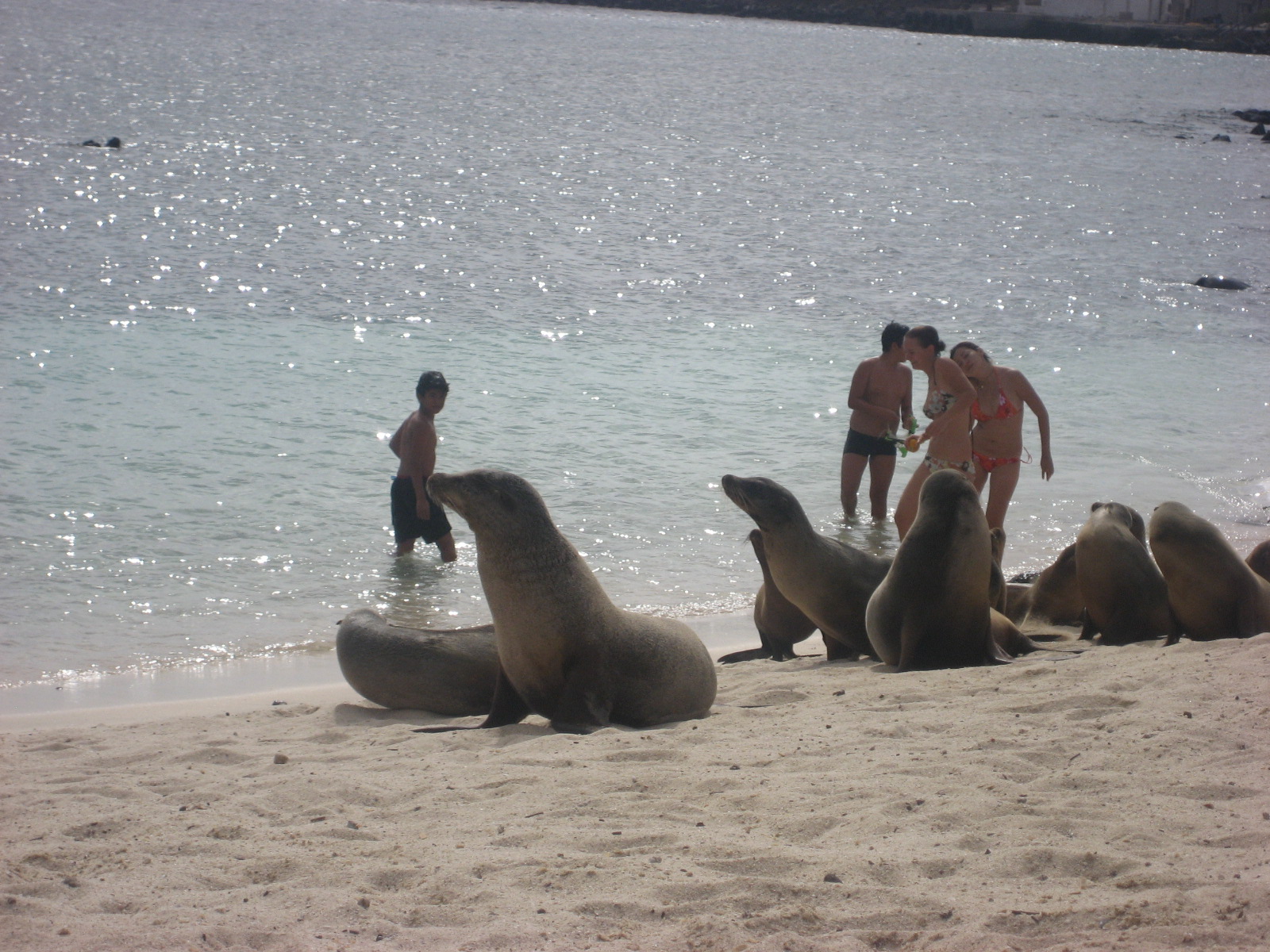Tourism can be a boost to any country’s economy. It can bring in millions of dollars and create thousands of jobs. But, it can also damage the environment and destroy what made a place so special and attractive to tourists in the first place. Consequently, countries across the globe have begun limiting the number of tourists allowed access to specific sites in an attempt to reconcile the benefits of tourism with environmental concerns. Italy has announced that they begin capping visitors to Cinque Terre in 2016, while the Thai government recently closed four islands indefinitely to tourists. Peru’s Machu Picchu is restricted to 2,500 visitors a day. Bhutan, Antarctica, and the Galapagos Islands are some of the more well-known places that have been working for years to balance environmental needs with a growing tourist demand.

While traveling throughout the Galapagos Islands earlier this year, I noticed many practices that were different from most other places that I have been. On arrival, flight attendants sprayed down the entire cabin with chemicals to kill any invasive organisms hitching a ride on passengers or their belongings. Our cruise ship had two naturalists on board who were required to accompany us anytime we left the ship. When we anchored at a destination, there was almost always no other ships around – anchorages are closely controlled so that there are never large groups of people in a certain area at the same time. All these things (and more) are a part of an ongoing effort to protect the environment and effectively reform the tourist industry in the Galapagos Islands.
A Magical Place
If you’re not familiar with the Galapagos Islands, they are an archipelago situated in the Pacific Ocean, about 620 miles from the Ecuadorian mainland. The islands and the surrounding marine reserves have some of the highest levels of endemism (species found nowhere else on earth) in the world. 97 per cent of the total land area of the archipelago is National Park, with the remaining three per cent of land is designated for human habitation. It is a magical place filled with wildlife, history and beauty.
Since 1990, the number of tourists and migrants to the islands, especially in the three designated towns, has risen exponentially. As the islands have become more popular and more accessible it has meant more visitors. More visitors means there is a greater need for tourist services and infrastructures. This demand has brought more people, more buildings, more demand on scarce resources, and more reliance on supplies from the mainland. All these things have meant an ever increasing human footprint on a delicate ecosystem.
Endangered World Heritage
The situation deteriorated to a point that, in 2007, UNESCO placed the Galapagos Islands on the list of Endangered World Heritage Sites. There was concern that continuing high visitation and immigration levels would lead to mass extinctions to native flora and fauna across the islands. New management techniques were called for to halt any further damage and, as far as possible, fix the damage which had already occurred. The Ecuadorian government used this warning as an opportunity to request a new model of tourism for the Galapagos Islands.
In 2010, The Galapagos Islands were taken off of the UNESCO Endangered List with the understanding that continued efforts were still needed. In January 2011, more than 100 stakeholders, including public, private, and community stakeholders, approved a new tourism management model. The new model aims to turn the Galapagos Islands into a world class ecotourism destination, focusing on a balance between the environment, local residents and tourists.
Sustainable Tourism Practices
To be considered a truly eco-tourist destination, the Galapagos Islands needed to change their tourism practices to be more in line with true ecotourism principles. But how do you make this new eco-tourist status a reality? In the Galapagos Islands, this meant developing a new model from scratch.

Before 2011, there was no comprehensive tourist management of the islands. The new tourism model set up a system with a regional and inclusive approach. The Galapagos State Tourism Board was born, allowing space for a community-driven process, with decisions made from the bottom up rather than the other way around. The Galapagos Tourism Monitoring System was also created to collect and analyze data about tourist activity within the islands. The data collected is used to help make future decisions in order to reach the ecotourism vision.
Work to be done
Changing the way things are done is never easy and for the Galapagos Islands to evolve into an eco-tourist destination was no exception. Incorporating improved tourism practices based on the ecotourism principles has been a drawn-out process. Ecotourism philosophies and services have been introduced and are slowly being accepted by local businesses and by the tourists using them.
The basic foundation for ecotourism has been laid in the Galapagos, but there is still much work to be done to ensure that the unique surroundings are preserved for generations to come. While some regulations are working well, like eradicating invasive species or limiting marine based tourism, others still need some work, such as curbing land based growth and dealing with immigration issues. Governments, non-profits, and local community members are continuing to work together and use the frameworks that have been set up to establish best practices.
When you are in the Galapagos Islands you can’t help but feel the specialness of the place; the striking landscapes, the never ending parades of wildlife (both on the islands and under the sea), and the remoteness. That is why so many visitors are drawn to them, because they are truly breathtaking and astonishing. For future generations to feel this same sense of awe, protections must be put in place. The steps taken by both the local and national government are to be commended, but there is still a long way to go and many issues to tackle.
With so many people traveling these days regulations and limitations are going to become more commonplace. It is often said that tourism is a double edged sword; the Galapagos Islands are a great example of how a country has begun to balance economic objectives with environmental safeguards. As more and more places become adept at better regulating tourism, our experiences as tourists will only improve.
Read Ethical Traveler's Reprint Policy.
